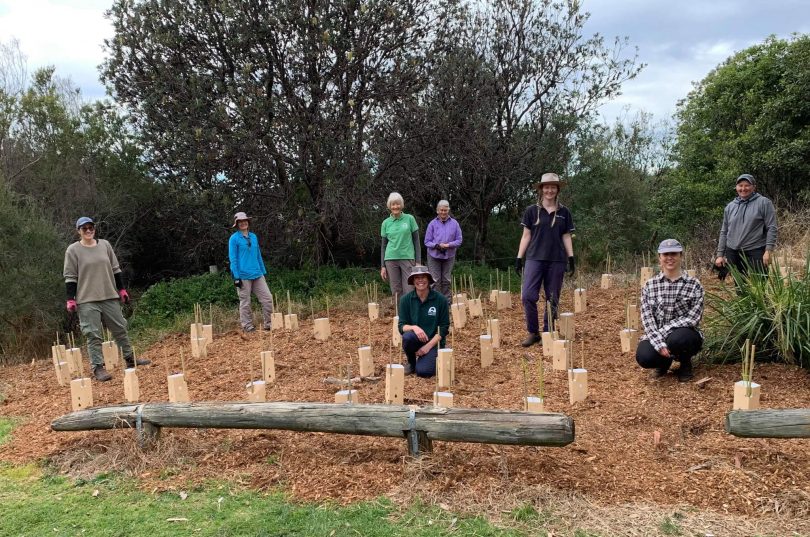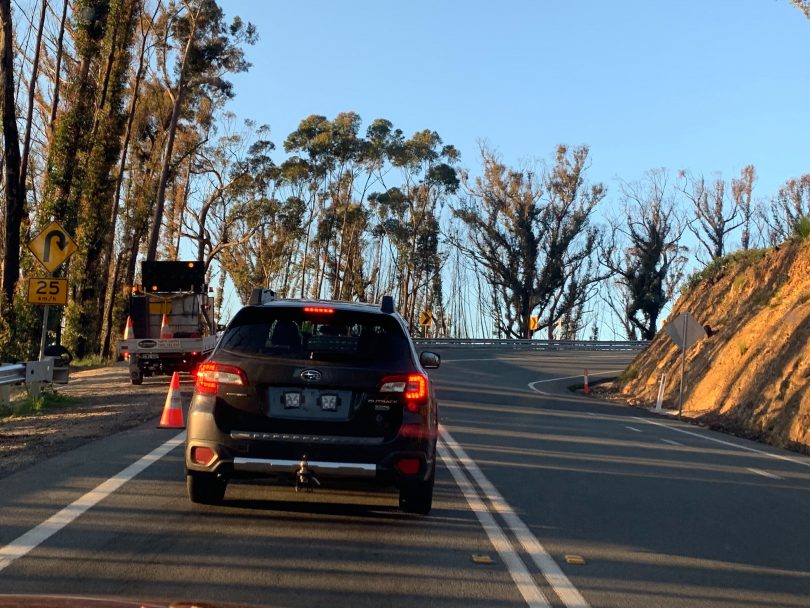
Landcare volunteers putting in new plants in the Eurobodalla Shire. Photo: Eurobodalla Shire Council.
The Black Summer bushfires of 2019-2020 are far from a distant memory for the people of the NSW South Coast. The environment still wears its scars in the form of blackened trees and bare earth.
It has been a big 12 months for Eurobodalla Shire Council as its environmental programs have delivered almost $1 million worth of works throughout the shire in the 2020-2021 financial year.
Much of this work has been thanks to grants and free help from local Landcare volunteers.
Eurobodalla Shire Council’s natural resource and sustainability coordinator, Heidi Thomson, said the South Coast environment is bouncing back slowly but surely.
“It will take decades for our ecosystems to recover, but the short-term response has been promising,” she said.
“With regular rainfall returning since the drought and fires, we’ve had an abundance of growth in native species, which is great, but weeds have also thrived. We need to keep maintaining a balance, and the grants we’ve received help us with this.”
The projects during the past year have been many and varied, from enhancing estuaries to bushland management.

Researchers at work in the bushfire-blackened bush in Eurobodalla Shire. Photo: Eurobodalla Koala Recovery Project.
Feral animals and weeds had to be warded away from endangered ecological communities, including at Pretty Point and the pristine Deua Valley. Then there was flying fox management, revegetation, nest box wildlife relief and marine debris clean-ups.
All up, more than 700 hectares of endangered areas and high-value estuarine areas were improved with weed control, revegetation, foreshore bank stabilisation and community education and engagement efforts.
Bushfire recovery projects continue to dominate, including helping more than 60 local landholders implement conservation activities on their impacted properties.
Council coordinated 24 active Landcare groups, whose roughly 300 regular members clocked 8275 volunteer hours of labour – an extraordinary effort, particularly in light of COVID-19 restrictions.
Their main work included reducing the impact of environmental weeds on native vegetation in reserves, putting up nest boxes for wildlife, and an Indian myna control program.

Dead trees continue to be removed along Kings Highway at Clyde Mountain. Photo: Kim Treasure.
There were also 240 beach and estuary clean-ups logged into the Australian Marine Debris Initiative database, which included ongoing monitoring of the 20 ‘drain buddies’ nets installed in the Batemans Bay CBD.
Ms Thomson said multiple floods when the ground was still bare of vegetation resulted in erosion issues across the Eurobodalla Shire’s waterways.
“We are working to ensure our riverbanks, coast and estuaries are more resilient to withstand future events such as these by restoring natural vegetation in these areas,” she said.
Bushfire recovery works will continue with particular focus on erosion at Tuross River and Clyde River, and ongoing weed control to promote healthy natural regeneration across the estuaries. The team will also help landholders protect Tilba Tilba’s warty zieria habitat – a threatened plant species found only in this area – in the coming year.
Transport for NSW is also busily removing approximately 400 high-risk trees under full road closure of Kings Highway at Clyde Mountain. The closures will be in place until November.







